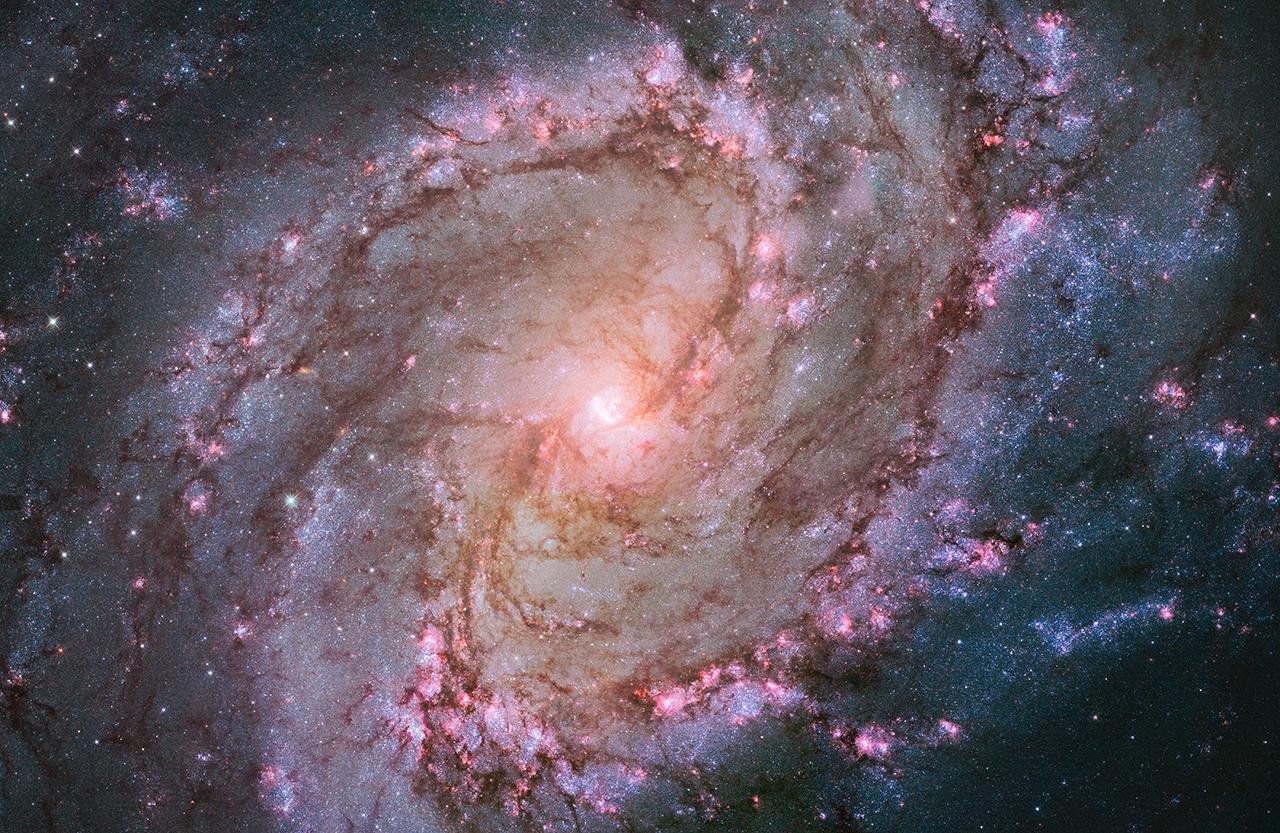every week, Technology World and #AstroMiniBR brings together five relevant and entertaining astronomical curiosities produced by collaborators. twitter profile To spread the knowledge of this science, which is the oldest! Check out:
#1: The closest supernova of the decade!
SUPERNOVA!
Japanese astronomer Koichi Itagaki yesterday recorded the appearance of a supernova in the Pinwheel Galaxy, 20 million light-years away.
The closest supernova seen in 10 years and is visible with amateur telescopes! #AstroMiniBR pic.twitter.com/Za5dtU85T4
— Thiago S Gonçalves (@thiagosgbr) 20 May 2023
If you have a good amateur telescope, this might be a good time to take it out and look at the sky: it’s not often that you can watch a giant exploding star die and shine like a billion suns!
Last Friday, the 19th, astronomers observing with the 2-meter Liverpool Telescope confirmed a report by Koichi Itagaki of a possible supernova (called SN 2023ixf) in the Pinwheel Galaxy (M101), an almost perfect Earth-facing spiral galaxy.
About 21 million light-years away, this is the closest supernova to the Solar System since SN 2014J, which occurred in 2014 in the Cigar Galaxy (M82), about 12 million light-years from Earth. Since Friday, some space telescopes such as Hubble and Swift have been directed to continue watching the phenomenon.
#2: The first planetarium of the modern era
[Quando os céus artificiais se iluminaram pela primeira vez]#FisicaThreadBR #AstroMiniBR
.
2023 is the centennial of planetariums! 100 years ago the first optical planetarium was introduced to the world. And since then we have changed the way we see the sky and the stars. pic.twitter.com/xIXBFwLK21— Eduardo Sato ???? (@ea_sato) 16 May 2023
If you’ve never had this experience, be sure to mark it on your calendar: visit a planetarium! about Educational and interactive environment covering topics commonly associated with astronomy and celestial observation. A dominant feature of most planetariums is the large dome-shaped projection screen, on which scenes of stars, planets, and other celestial bodies can appear and move realistically to simulate their movements.
This projection can be created in many ways with different types of projectors and optical systems. While several primitive planetariums have been created since antiquity and over the centuries that followed, the first planetarium in the modern sense of the word opened only 100 years ago, in August 1923, when the Zeiss planetarium projected images of the night sky. White plaster finish of the 16 m hemispherical concrete dome erected on the roof of the Zeiss factories.
#3: Why is it important to discover exoplanets?
You may wonder why it is important to explore the outer planets. For example, the ‘volcanic’ planet in the image below is ~90 light-years from Earth and can help astrobiology examine whether tectonic or volcanic activity was necessary for the formation of life. #AstroMiniBR https://t.co/emzSpe91HD
— Exoplanet Mission #Inoculate Yourself! (@missao_exo) 21 May 2023
One of the deepest and most thought-provoking questions humanity has ever asked is: “Are we alone in the universe?”. Countless philosophers, scientists, and curious people have asked this question for thousands of years, but no answer has been satisfactory enough.
Perhaps by now: we are the first generation to have the tools at our fingertips to begin answering this question with sophisticated scientific observations, now knowing not only that there are millions of planets around other stars, but also inferring about their existence. hundreds of billions more.
Since the first exoplanet was discovered in the mid-1990s, astronomers have found a dazzling array of planets, some very different from those in our own Solar System.
Check them out in all this variety allows us to learn a little more about how the universe works and how the Earth and our Solar System fit into this cosmic picture.
#4: What’s in the atmosphere of Mars?
This is the first spectrum of the Martian atmosphere. @NASAWebb!
The spectrum in the near-infrared region reveals signatures of some of the most abundant molecules in the red planet’s atmosphere, such as H2O, CO and the parent molecule CO2.#AstroMiniBR pic.twitter.com/TvVXrsUmLA
— Aline Novais (@astroaline) 8 November 2022
NASA’s James Webb Space Telescope (JWST) captured the first images and spectrum of Mars in the second half of last year. This is astronomers Access to a unique perspective of Mars thanks to JWST’s unique infrared sensitivitysupplementing the data collected by orbital vehicles, mobile and other telescopes.
Preliminary analysis of the data shows a rich set of spectral features that include information about dust, icy clouds, what types of rocks are found on the planet’s surface and atmosphere. The spectral signatures of water, carbon dioxide, and carbon monoxide, including deep valleys known as absorption properties, were easily detected with Webb and will help to better understand the physical and even habitability characteristics of our red neighbor.
#5: No, it’s not a galaxy!
what galaxy is this??
it’s not a galaxy, it’s a PROTOPLASINAR DISC! What we see is the gas and dust surrounding the newly formed star from which planets are born.
The “galactic” aspect of IM Lup is likely due to interaction with an “invisible” companion. #AstroMiniBR pic.twitter.com/NvjHeqZmPQ
— Sofia Fonseca (@sofia_fonsecao) 29 November 2022
The image you’re looking at is of IM Lupi, a young star with an intriguing protoplanetary disk. Based on observations of IM Lupi’s disk over the past few years, astronomers have discovered that the disk is not spinning properly; There are more than a dozen “folds” where the gas moves at a different speed than you would expect from a smoothly rotating disk.
Additionally, they confirmed the presence of a spiral pattern imprinted on the disk’s upper surface. These features may signal that IM Lupi’s large disk is hiding a massive planet orbiting the star at a distance of more than 1 billion kilometers!
Source: Tec Mundo
I’m Blaine Morgan, an experienced journalist and writer with over 8 years of experience in the tech industry. My expertise lies in writing about technology news and trends, covering everything from cutting-edge gadgets to emerging software developments. I’ve written for several leading publications including Gadget Onus where I am an author.













